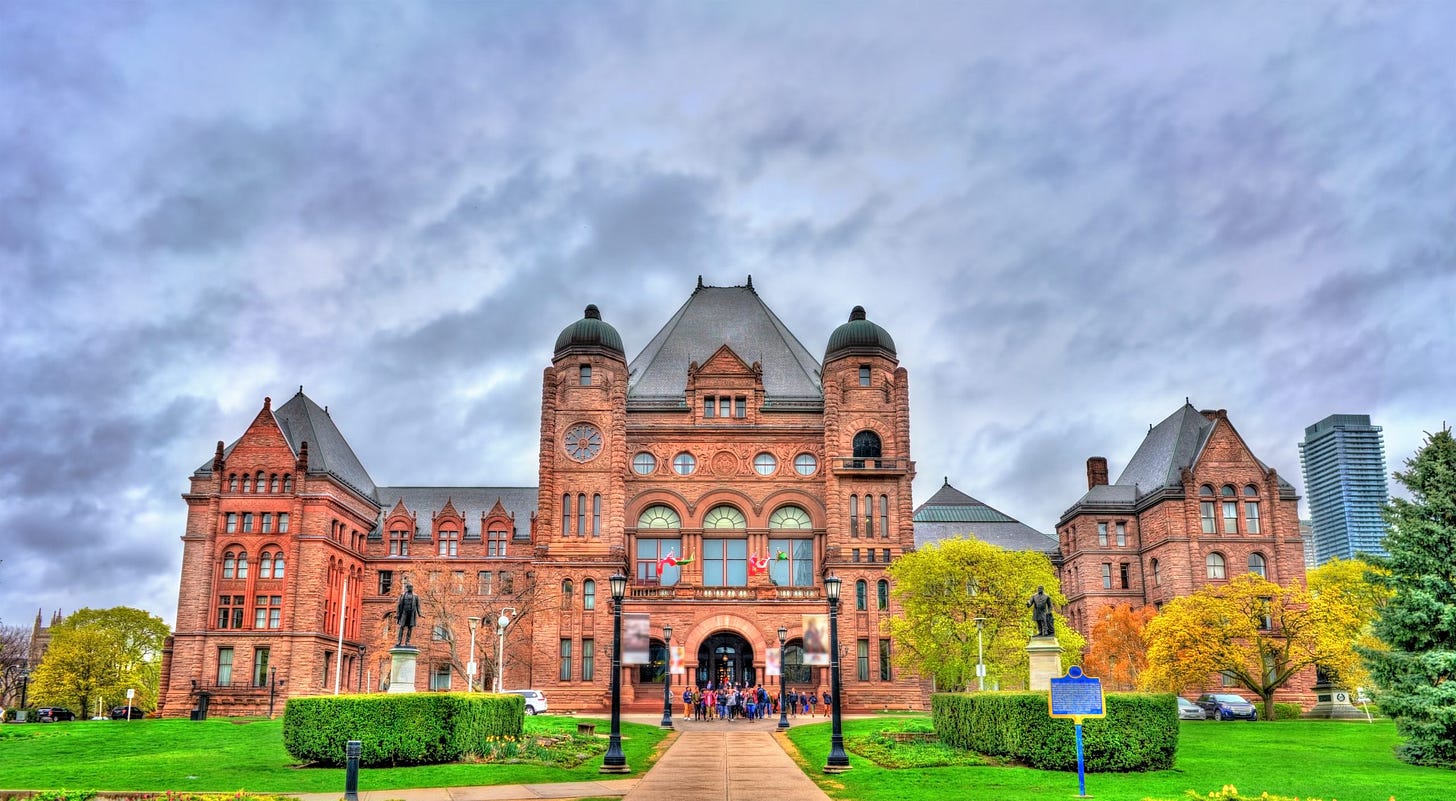What Ontario's Public Colleges Can Do to Save Themselves (Part 2)
Government relations is often an overlooked aspect of a public college's strategy. Here's why it needs to take centre stage.
We’re continuing this series on how Ontario’s public colleges can weather the storm ahead, and this time we’re looking at….
Government Relations.
Government Relations
Government relations (or GR) is an increasingly important element to public college strategies going forward. No longer can Ontario’s colleges “go it alone” or “hope for the best” — it’s clear that neither the Province nor the public actually cares about funding colleges — and that needs to change.
GR is the key for changing that opinion. Ontario’s public colleges need to use it to communicate their needs in a way that resonates with government, and ultimately influence policy decisions.
And, in order for government relations to be effective, it needs to be consistent, targeted, & actionable.
A good example is the successful joint advocacy push by Colleges & Institutes Canada (CICan) and the Canadian Alliance of Student Associations (CASA) to secure funding for the applied research projects, which was ultimately successful — even in a very fiscally-tight Budget 2023.
For colleges, that all starts with the addressing most urgent priority: funding.
1. Advocate for Increased Funding
Ask any policy expert in post-secondary education, and they’ll tell you: stagnant provincial transfers are the root cause of the current college crisis in Ontario.
In fact, when you look at the numbers, funding for Ontario’s public colleges hasn’t changed — in nearly a decade.
To me, this suggests that despite the immense challenges colleges are facing, these challenges are not being effectively communicated with government, or at the very least — that message has not resonated.
How do public colleges make this pitch? By hammering home the following:
Economic Impact and Workforce Development — Public colleges are an essential talent pipeline for Ontario’s workforce, and enhanced funding would help maximize colleges’ ability to produce skilled graduates that meet Ontario’s labour market demands and support strategic sectors (eg healthcare, construction, etc).
Financial Sustainability Concerns — Ontario’s public colleges produce some of the best programs in the country. But in order to keep that quality, they need short-term relief. Colleges need to communicate that they are in crisis, and that a short-term 10% increase in operating grants (as recommended by the Blue Ribbon Panel) is essential to avoid total disaster, which would seriously harm Ontario’s economy longterm.
Return on Investment — Colleges can also communicate with government decisions-makers that investing in public colleges leads to significant returns for Ontario, with graduates contributing through stronger tax returns, reduced reliance on social services, and higher productivity.
2. Push for tuition flexibility
The Ministry of Training, Colleges, and Universities sets the rules for college tuition mainly through its Tuition Fee Framework. Currently, the Ford government has frozen domestic tuition levels since 2019 — and will continue until at least 2026-27.
While this policy sounds great on the surface, it actually has made it incredibly difficult for institutions to adjust to change (eg the consumer price index has jumped 15% since then!)
Notice how reliant public colleges are on tuition dollars — and this comes almost exclusively from international tuition.
Ontario’s public colleges need to effectively pitch the need to flexibly adjust its domestic tuition levels — within a firm, annual cap (similar to a rent cap). The Ontario blue-ribbon panel recommends allowing the Province:
establish a multi-year tuition framework, with a one-time adjustment of 5%
followed by allowing further small increases in following years, of either 2% or the annual Consumer Price Index.
Again, the government relations pitch needs to emphasize the following:
Financial sustainability for colleges — The current tuition freeze is not a longterm solution to the current financial volatility for public colleges. The freeze has cost Ontario’s post-secondary sector roughly $1.2 billion since 2019, and a more tuition flexibility would significantly help stabilize the sector.
Creating an Equitable Funding Model — Currently, the Province allows for a 5% increase for out-of-province students, but has frozen domestic tuition — creating an inequitable funding model. A more balanced approach would significantly help stabilize finances.
Reducing reliance on international students — The current tuition freeze is directly responsible for the heavy reliance public colleges have placed on international tuition dollars. By enabling domestic tuition to match inflation, public colleges can start to shift away from this heavy reliance, and minimize the risk to further federal cuts.
Targeted support for students — Domestic tuition helps provide some incredible supports for students during their studies, and allowing it to sustainably grow means students are better supported across their studies. Better student success means better integration into Ontario’s society — a huge benefit to the province longterm. Mohawk’s College Student Success Innovation Centre, is a great example.
3. Seek targeted investments
Not only do provincial transfers need to increase, but colleges should also advocate for specific funding in areas aligned with provincial economic priorities, like healthcare and skilled trades.
This is a huge advantage for Ontario’s public colleges, as their ability to generate highly skilled workers, fill industry gaps, and meet labour sector needs is unparalleled.
Colleges need to leverage this in their advocacy.
Recent announcements in infrastructure, micro-credentials, mental health, and research show that the Province has an appetite for targeted investments in public colleges — especially when it understands the benefits and value of such investments.
By connecting targeted investments with clear economic and labour market benefits, colleges can really boost their GR efforts and see significant wins.
There you have it. No matter how you look at it — government relations needs to be an essential element of every Ontario college’s longterm strategy going forward.
Next up, I’ll look into how colleges can maximize their strategic partnerships and innovation.













